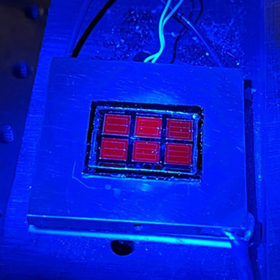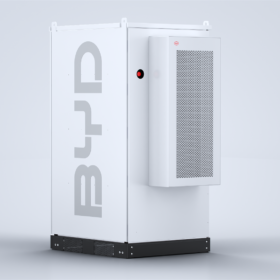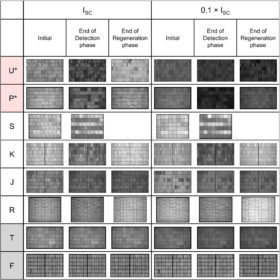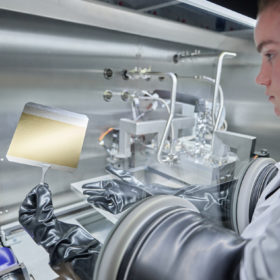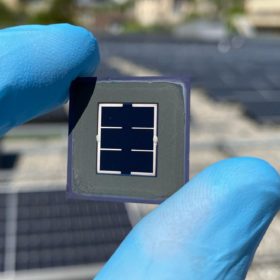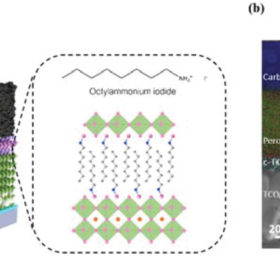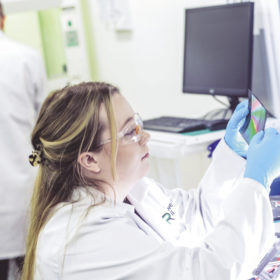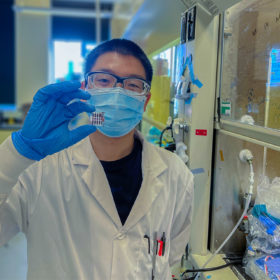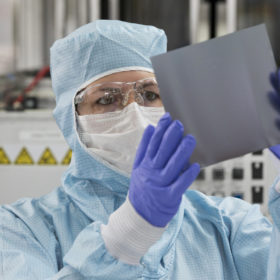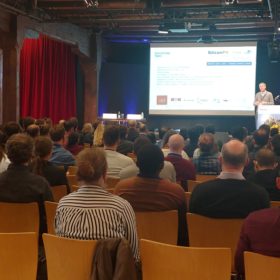Quantum well superlattices for a new world record cell efficiency of 39.5%
Scientists in the United States have fabricated a triple-junction solar cell that reached 39.5% efficiency – a world record for any type of cell under one-sun illumination. Though relying on materials and processes that are still too costly for most commercial uses, the concept could soon see actual applications in powering satellites and other space-bound technology.
Smarter E Products: C&I battery from BYD
Chinese battery manufacturer BYD will this week introduce an expanded portfolio of energy storage systems designed for the commercial and industrial solar markets. At The smarter E, the company will also offer a sneak peak at a new high-voltage storage system expected to be launched later this year.
Scientists, industry players reveal plans for new LETID testing standard
An international research group has published the details of a two-year project to develop reliable ways to assess light-elevated temperature-induced degradation in operational PV modules.
Atomic layer deposition tool for perovskite cell pilot line
Dutch equipment supplier SALD has announced delivery of a spatial atomic layer deposition system to an unnamed customer in the United States. The tool will be used in the pilot-scale production of perovskite solar cells. While it has not disclosed the exact function of the tool within the pilot project, it said it will be used to deposit thin coatings to protect cells from damage in later manufacturing stages, and ensure their longer-term stability.
EPFL achieves 29.2% efficiency for tandem solar cell with fully textured silicon
Scientists in Switzerland made significant progress with an approach to perovskite-silicon tandem cell design that they say could eventually be integrated into existing silicon PV manufacturing. They have announced the achievement of a 29.2% cell efficiency – not far from the overall record for tandem cells, and verified by Germany’s Fraunhofer ISE.
Electron blocking for 18.5%-efficient carbon-electrode perovskite solar cell
Scientists in Germany and Switzerland have developed a perovskite solar cell with a carbon electrode that achieved 18.5% efficiency. It also retained 82% of this after 500 hours of continuous illumination. While a long way behind what has been achieved with other perovskite solar devices, the cell is produced via all low-temperature processes that could likely be scaled into low-cost, large-scale manufacturing – making the approach one worth pursuing further.
The weekend read: Plans for a fully fledged European PV supply chain
While Europe was previously a leader in the manufacturing of solar cells and modules, the plans falling into place this year already represent a scale never before seen on the continent. And they’ll need that scale if Europe is to meet expected demand for new solar over the coming decades, without relying heavily on imported products and components. Many of the technologies at the center of these plans are brand new as well; pv magazine looks at a few of the innovators planning to scale up alongside more mainstream players, and how these fit into plans for a fully fledged European PV supply chain.
Quantum adjustments for 23.9%-efficient inverted perovskite solar cell
Scientists in Canada fabricated a perovskite solar cell based on an inverted structure that achieved 23.9% efficiency, and maintained 92% of its initial performance after 500 hours of accelerated aging tests. By carefully controlling the thickness of the perovskite layer, the group was also able to gain control of “quantum mechanics” properties such as the movement of electrons within the layer and the wavelengths of light absorbed.
New technologies, new opportunities
UK-based analyst Exawatt and Germany’s Nexwafe published a white paper this week that takes a close look at the current state of PV manufacturing worldwide, and how Nexwafe’s innovative wafer production tech might fit into it. They said that if the potential of its Epiwafer can be realized, the PV industry may yet see “another revolution in wafer manufacturing.”
The solar tech check: Key takeaways from SiliconPV 2022
This week saw more than 300 scientists and PV experts converge in Konstanz, Germany for discussion of the latest development in PV cell technology, and for many the first chance for a face-to-face meeting in quite some time. pv magazine reports from the SiliconPV conference, where the PV research community revealed a strong focus on eliminating or optimizing the use of critical materials like silver and indium from cell production, alongside a wealth of improvements in efficiency and longevity that is still possible for silicon PV technology.

